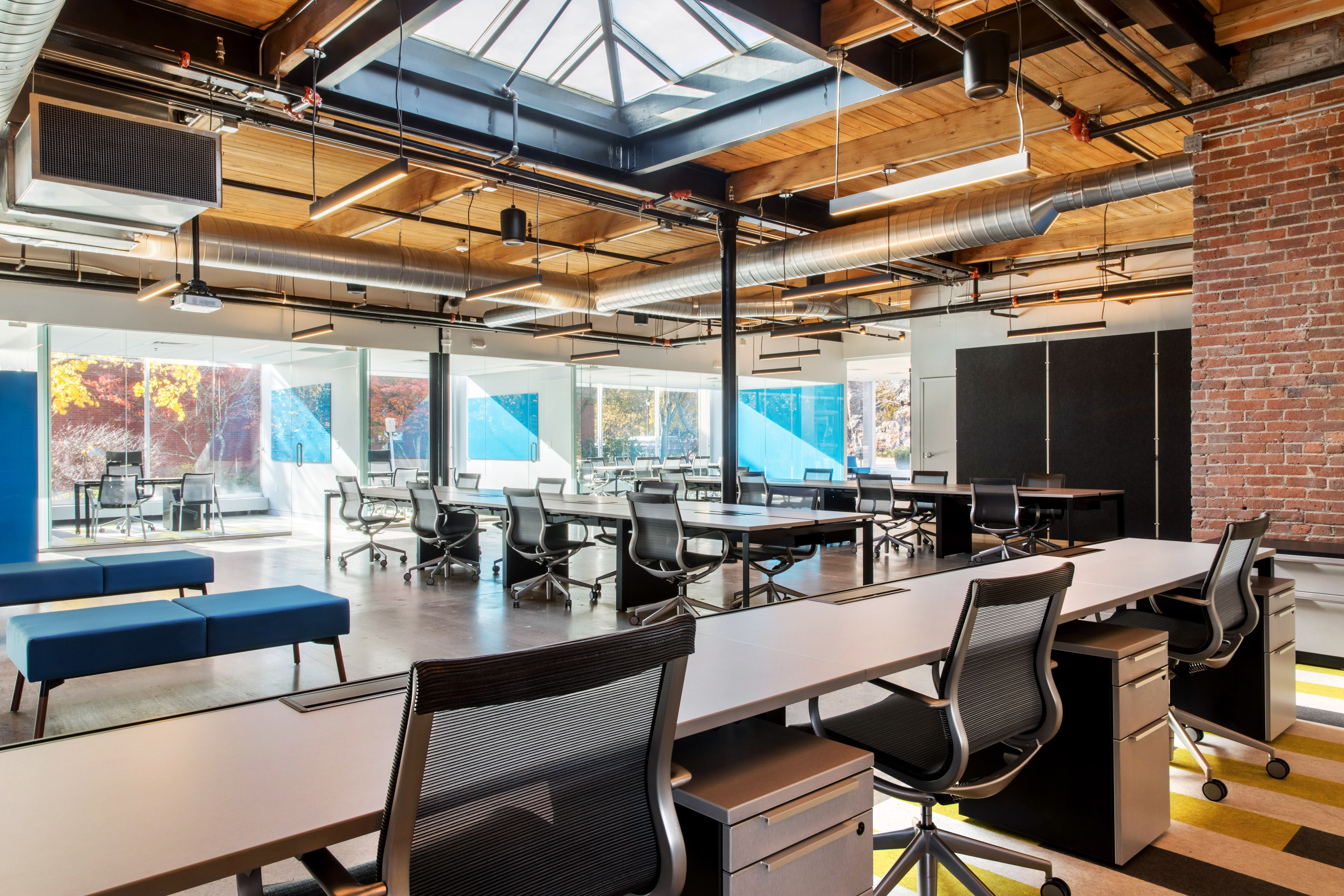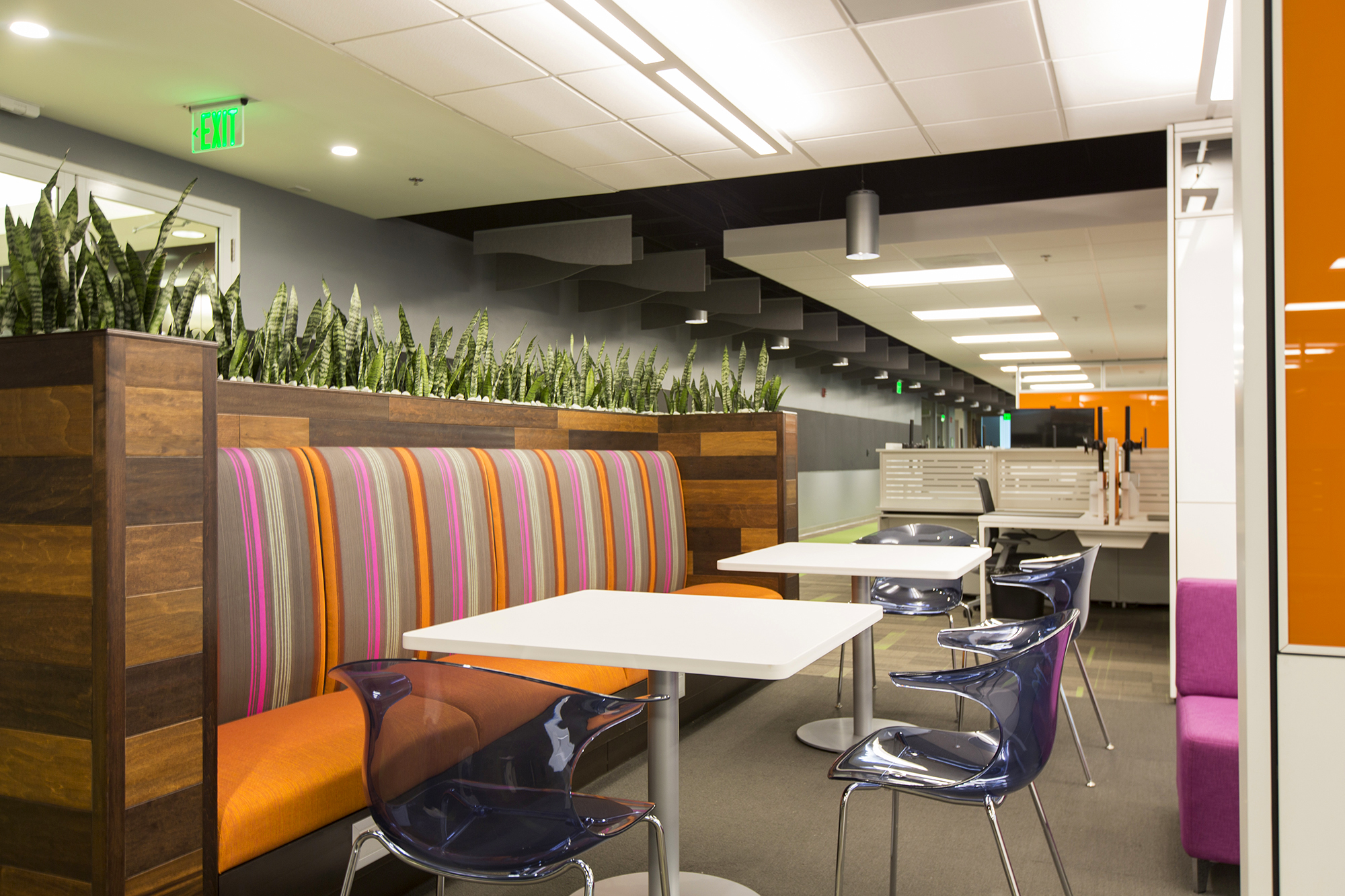This is the first in a series of articles designed to demystify acoustic design and acoustic consultants – they aren't as scary (or expensive) as you think!
Do you work in an office? If so, most likely you have been annoyed by a noisy coworker or other random sounds. That’s acoustic distraction, and it’s a major issue in today’s workplace – especially in the now-omnipresent open office environment.
Acoustics and acoustic design principles are often difficult issues for architects and designers alike. It's a complex task, with many different factors – room size, floor covering, desk material, ceiling type, usage, even personality type – all affecting the perceived sound (proofing) quality within a space, and rarely do owners budget for acoustic design.
James Black is an acoustic consultant with over 11 years of professional experience and a Master of Science in Acoustics, and we've partnered with him to answer some of the most pressing yet common questions about acoustics and design.
We asked James what he felt was the most commonly overlooked element in acoustic room design, and we were surprised by both the simplicity and complexity of the solutions. Read on to see your next project through James’ eyes.
Breaking It Down
“There are so many different types of spaces and so many different ways things can go wrong acoustically. Typically, the most commonly overlooked thing is background noise levels. Sadly, some brand new spaces have such excessive noise levels that they are unusable for their intended function. Obviously, many spaces don’t have acoustic issues to that severe extent, but there are a good deal that still have detrimental excessive noise.”

For room acoustics, sound absorption is often overlooked. Consider a restaurant. “Sound absorption is really needed to help reduce noise buildup in the space. Without it, noise levels can be so excessive that it’s difficult to understand your companion across the table, even with that companion shouting. Noise feeds on noise, and a lack of sound absorption to help break the cycle can be really detrimental.”
Gymnasiums used for sound-sensitive graduation ceremonies and other assemblies are another example of spaces in which room acoustics are often overlooked. “The excessive reverberation in these large spaces resulting from inadequate sound absorption really degrades the intelligibility and we can miss crucial words or moments.”
Another common mistake happens when looking to reduce sound from a neighboring room. Sound-absorbing sprays and other fibrous treatments are often added to the surface of assemblies in hopes of quieting sound coming from a neighboring room, thinking that this will greatly improve the sound transmission loss of that assembly.

“Adding sound absorption to the receiving room can help improve the noise reduction some and can even be notable if the receiving space would otherwise have very little sound absorption. However, to significantly improve the transmission loss of a sound isolation assembly, typically adding a significant amount of mass, or resiliency and space between layers, to the assembly is required. Adding a fibrous spray or other treatment to the surface does not accomplish this.”
It’s All About Location, Location, Location
This maxim applies to the settings surrounding an entire space or building, where a room is located within a building, and where sound absorbent materials are placed. “Early on, there are some very important decisions that can have a big impact on mitigating acoustic issues during design. For example, don’t build a recording studio next to the train tracks. Don’t build a nightclub at the base of a residential tower. Avoiding these kinds of mistakes can prevent a lot of headaches, budget issues or worse.”

One thing to note with these kinds of rooms and spaces, is that the location – not only the amount – of sound absorbing material is crucial. “Location is critical for effectiveness as well as many other important acoustical aspects such as mitigating echoes and sound focusing, maximizing early reflected energy and limiting late reverberant energy.”
Shape Your Spaces
The best solution in achieving good acoustics is to consider acoustic design from the earliest stages of a project. Room size and shape are initial factors that strongly shape the room acoustics (e.g., bigger rooms=more reverberation) and should be considered sooner rather than later when designing a space. “Avoiding round rooms or wide fan shapes can mitigate lots of acoustical problems that are difficult to deal with.”
That’s not to say that there aren’t things that can’t be done to improve these types of rooms, especially if they are an important part of the design. However, thinking about these sort of things early on can give you a head start – and choosing the right shapes can save you a good chunk of change before acoustics get out of hand.

Of lesser importance, but still very important, is the acoustical properties of all the materials found within the space. Some materials reflect sound, some absorb sound, some diffuse sound, so it is essential to keep an inventory of the locations and acoustical characteristics of the materials specified in projects to achieve the proper reverberation, intelligibility, and noise levels.
Acoustic design is important – ask the right questions, and you'll vastly improve the occupant experience in your spaces.
Check out Part Two of this series here or just save a step and download the entire article here!
James Black has a Master of Science degree in Acoustical Engineering. He has worked professionally as an acoustical consultant for more than 11 years. Most recently, he was a senior consultant in one of the leading and international acoustical consulting firms, working on world-class projects. He now lectures at Montana State University and continues to provide acoustical consulting services. He can be reached at (858) 342-0986 or jblack@jbacoustics.com.
Related: check out our Specifier's guide to Acoustical Baffles vs. Clouds.